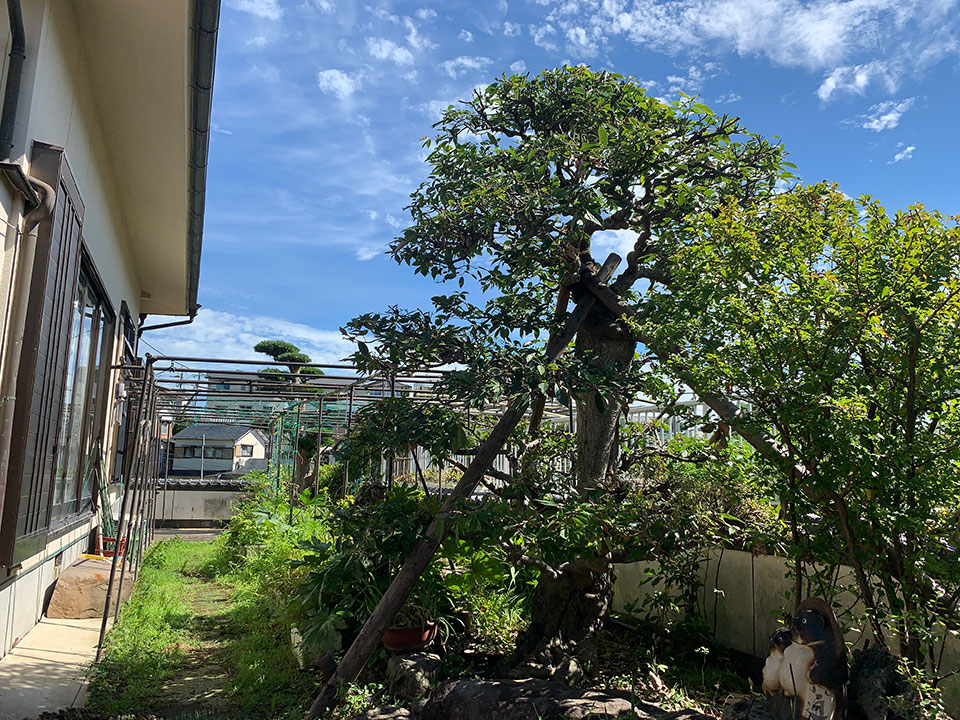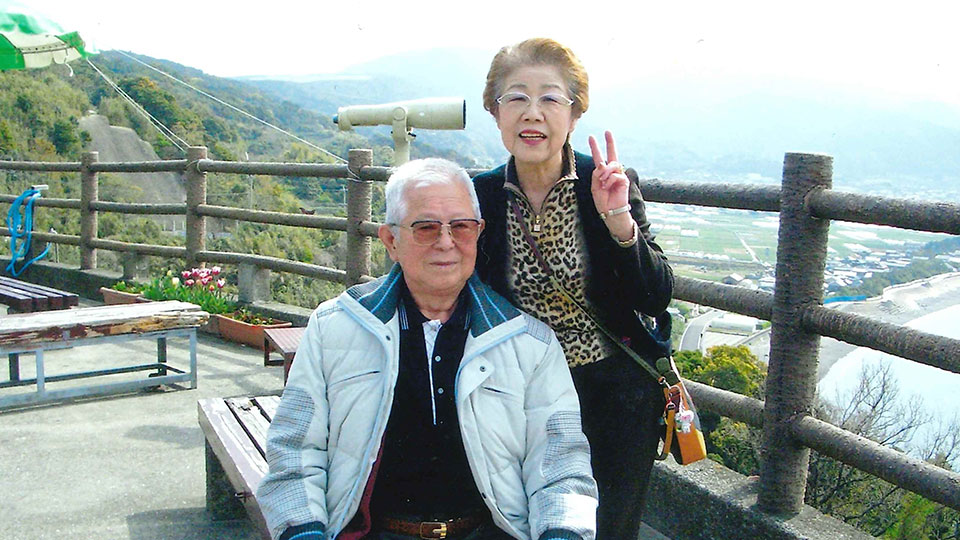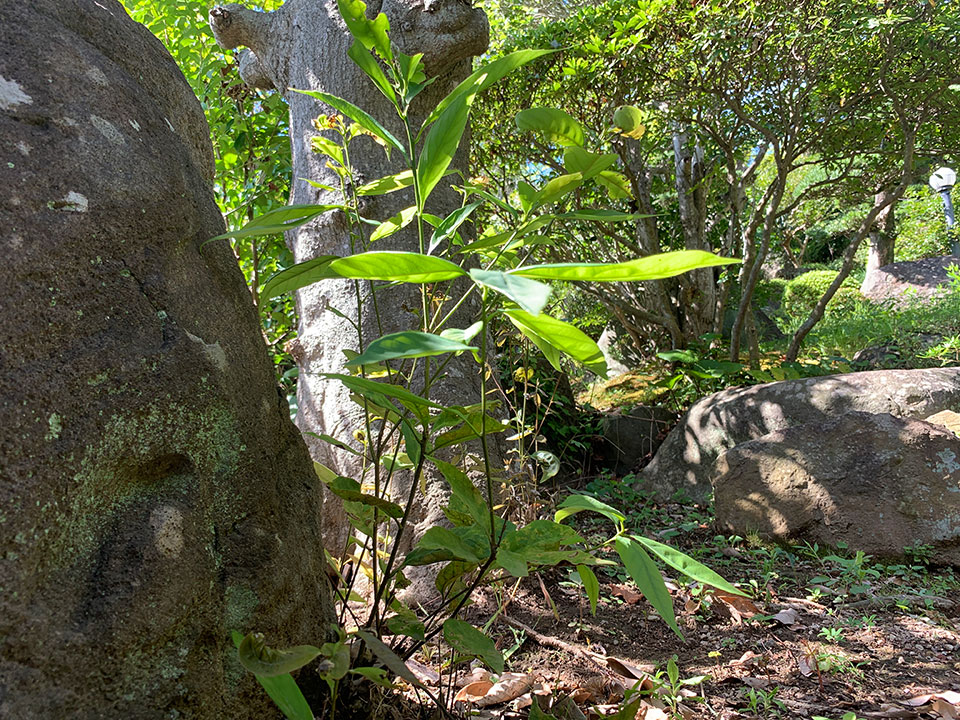The two oak trees in Sachiko Yamashita's garden have long gashes all the way down their trunks. These are the physical scars of the 1945 bombing.

Sachiko's husband Torasaburo looked after the trees until his death five years ago. When the atomic bomb was dropped on Nagasaki, Torasaburo was away from home for military service. The bomb killed his four younger brothers and turned his home to ash. The only things left for him were the two oak trees.
He rebuilt a home on the plot next door, and would look after the damaged trees. When he and his family moved to a new area, he uprooted the trees and took them with him. Every morning, he would go out into the yard, take a look at them, and tell them they're doing well. Sachiko says it was as though he was checking on members of his family.

Torasaburo hired gardeners to take care of his other plants, but he insisted that only he should look after the trees. After he died, Sachiko took over the role.
Three years ago she found a small oak sapling next to one of the trees. She believes it's from her late husband's oaks.
“I feel as though my husband let it sprout. It makes my heart so happy. As I help them grow, I should remember him and pray that war never happens again. I truly don't want anyone to experience those harrowing times."

Survivors of the Nagasaki bombing have a strong emotional connection to the hibaku trees, and they are making sure the sentiment is passed on to people who did not actually experience the bombing.
Kyoko Azuma moved to the city three years ago to study at Nagasaki University. She says that, until then, she hardly ever felt that the atomic bomb was something close to her heart.
Now she volunteers to plant seedlings, or send saplings taken from hibaku trees to other parts of Japan.

Azuma says the activities have taught her how much power the trees have to convey a message.
She says the planting events are inspiring people who never experienced the war, and the participants think about the horror of atomic bombs and the value of peace, rather than just seeing the issues as someone else's concern.
"It makes a more powerful impression to touch and get involved than just to read about the tragedy. That's all the more true for our generation, which is far removed from the war," she says.
Nagasaki city authorities say there are now 46 hibaku trees within four kilometers of ground zero. The city is preserving them as valuable records of the bombing.

